The thing about indoor mold growth is that once it settles in, it’s challenging to fully remove all of the contamination. It's not impossible, though! Just a bit tricky. And, to make matters more difficult, most of the moldy particles hanging around are invisible. Learning how to properly and safely remove mold from personal belongings is key to creating a safe home.

That way, you’re not hosting a moldy particle bomb party in your home. Think of the confetti cannon used for sports events, competitions, and award shows, and you’ve got the right idea. No one wants that in their home!
That Devious Mold
Before delving into the "how to" remove mold from personal belongings, it’s best to set up a foundation of why they need to be cleansed in the first place.
Let’s set the scene.
Rapid Mold Facts
There are over 100,000 species of mold identified throughout the world so far. ¹’² Each species reproduces by creating microscopic spores that they release into the air. Think of a dandelion releasing those white puffy seeds, and you’ve got the right idea.
These little seed-like spores will then ride the air current wherever that may lead and stick to any surface they come into contact with. If that surface has the right ingredients, that spore will put down roots and claim the space as its own. Once it transitions into the world of the living, it will turn into a little moldy factory and begin pumping out more and more spores.
Some species of mold can also produce microscopic toxins called mycotoxins when they feel threatened.³ A new species of mold trying to move in on the block or a harsh chemical like bleach can trigger this defensive response, and before you know it, poof, you’re now dealing with spores and toxins throughout the home.
It’s important to note that while the FDA regulates mycotoxins in our food, they do not regulate safe levels in the indoor air you and your family are breathing in every day.⁴
Why Your Home?
A mold spore needs very little to survive and thrive. Modern-day homes often offer the perfect conditions for these little moldy particles to put down roots. Especially as trends continue to build homes tighter and with less airflow to help make them more energy efficient. Less airflow means that any particles that make it inside the building will stay inside for much longer because there’s little interaction between the indoor and outdoor air.
But, back to appropriate growing conditions. Let’s say a spore flies right in through the front door or tags along on your shoe. All this little guy needs is to bump into a surface with four simple components to start growing.
These four ingredients for life include:⁵
- Oxygen (mold requires very little)
- Temperature (most species prefer 40-90 degrees Fahrenheit, but some can handle extremes)
- Food (they eat almost anything)
- Moisture (24 hours of moisture and mold is set to go)
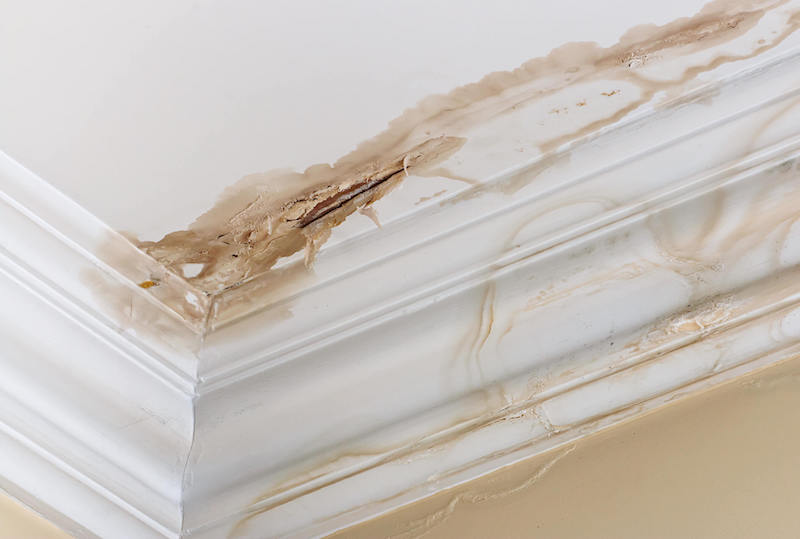
Now picture your home. Chances are, there are multiple opportunities for mold to begin growing at any given moment if preventative measures aren't taken to avoid it. A makeup sponge, dishwasher, and shower are among a few. Not to mention, random water events such as leaks or floods can provide the conditions for growth.
As soon as that mold begins to grow, though, the visible mold and the surface it’s located on aren’t the only problems. There are now spores (and potentially toxins) on all surrounding surfaces and, if they catch the indoor air current just right, in other areas of the home. That’s why one mold problem can quickly turn into three or four and why proper remediation, including knowing how to properly remove mold from personal belongings, is so crucial.
Otherwise, you and your family will continue to face exposure even after removing the visible mold growth.
The Dark Side of Mold Exposure
With so many species of mold out there, everyone is bound to come into contact with a few spores, particles, and toxins throughout the day. That’s typically not a problem. Outdoor mold growth is a key component of natural processes like decomposition, so a huge thanks to outdoor mold!
The problem arises when the body isn’t facing just a few random particles, but an entire invading army of particles. This is what happens when mold grows indoors. Just imagine standing in the middle of a snow globe. Now picture your home as a snowglobe with mold particles as the snow, and you’ve got the right idea.
All of those particles in the air are trapped within your home and make their way into your body. The immune system can easily get rid of a couple of moldy particles, but a large volume of them throughout a single day is a big task. Eventually, the immune system can get overwhelmed, run down, and/or malfunction.
Researchers are still attempting to figure out exactly how mold growth affects the human body, but many factors play a role, making it difficult to nail down. Things like immune system status, the volume of exposure, species of mold, the presence of mycotoxins, and genetics all play a part in whether or not an individual will develop symptoms and how drastic those symptoms will be. ⁶’⁷’⁸’⁹
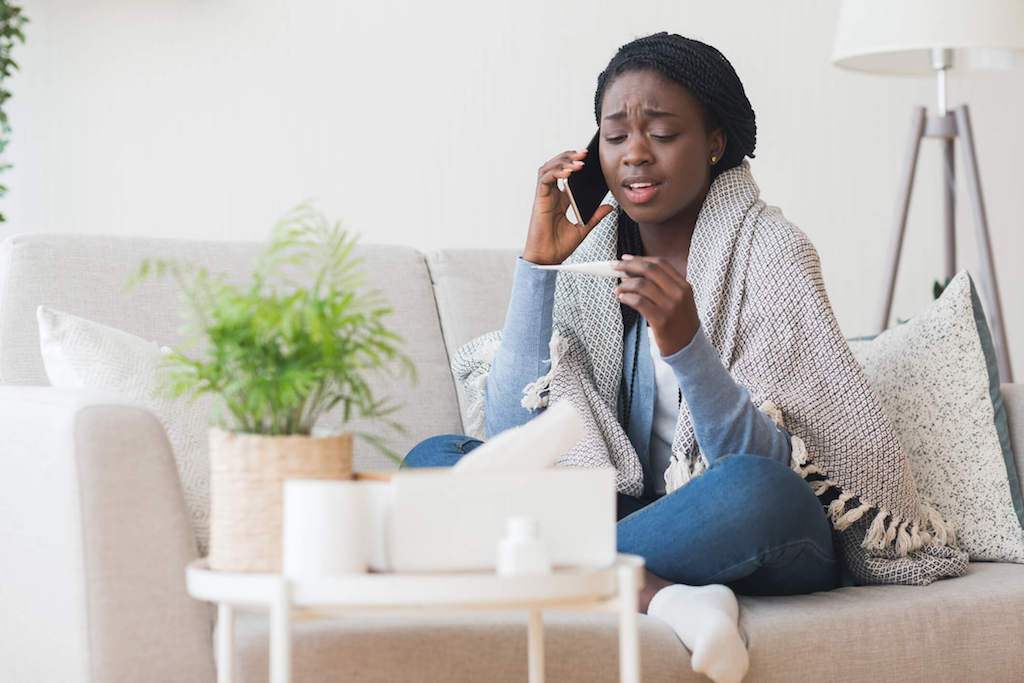
Some common symptoms of mold exposure are:
- Coughing
- Watery eyes
- Rashes
- Neurological issues
- Hair loss
- Mood swings
- Digestive problems
- Respiratory issues
Mold toxicity can also trigger or work in tangent with other autoimmune disorders such as Lyme disease, Candida, and PANS/PANDAS.
The Importance of Knowing How to Remove Mold From Personal Belongings
No two individuals will respond to mold exposure the same. Some may only experience a runny nose, while others may develop over 30 symptoms. The possibility of adverse health reactions from this indoor contaminant is reason enough to deal with any growth quickly and correctly.
When dealing with a mold problem, make sure to take all of the appropriate steps to remediate the mold. This includes fixing the source of the mold problem, removing the mold, and dealing with all of the contamination left behind. Remember, mold particles aren’t the only contaminant present. Mycotoxins and bacteria may also be attending the moldy party as well and require a little extra effort to kick to the curb.
Remediating mold doesn’t just stop there, though. Whether you’re tackling a small-scale project or a large issue that requires a remediation team, the personal items around that growth and in the house must also be remediated. All of the particles produced by that moldy factory and kicked up during remediation will stick like velcro to any surface they come into contact with. From clothing and shoes to coffee tables and couches, all surfaces may be contaminated. Unless those particles are removed, exposure will continue for you and your family.
Knowing how to remove mold from your personal belongings is key to ensuring your home is completely decontaminated after the moldy event so that you can get back to living a healthy and happy life.
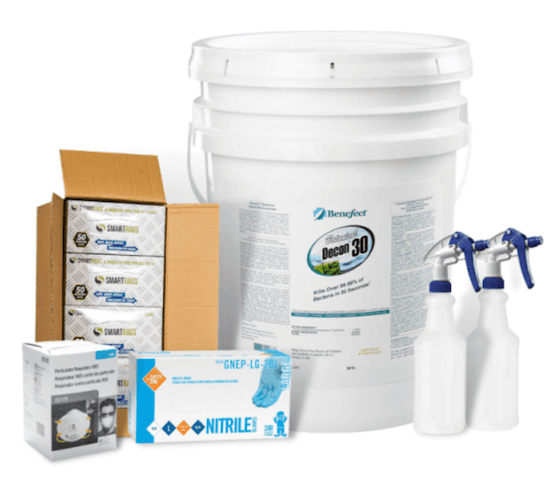
Steps to Remove Mold From Personal Belongings
To remove mold from personal belongings, you’ll need a proper cleaning protocol and the right products for the job. Companies like HomeCleanse utilize these procedures every single day, so when in doubt, ask the experts! There’s also a Contents Cleaning Kit available to buy to get you started on the path to success.
Safety Note: If you or a member of your family is experiencing symptoms from mold exposure, it’s best to get rid of as many personal items as possible. Removing contamination from these surfaces is difficult and not always guaranteed to be successful, so starting from scratch is best in these situations.
That being said, sometimes the budget doesn’t have room for replacing items, and some belongings may have significant value. In cases such as this, the steps below will get you started on the right track for decontamination. A good rule of thumb is to reintroduce these cleansed items one at a time to ensure no reactions will spark up from hidden mold particles that were missed.
Porous vs. Non-porous
The challenging aspect of this process is that to remove mold from personal belongings, you’ve got to use different methods based on the type of surface.
To get started, assess the type of surface you’re about to clean.
Is the surface a:
- Porous surface: liquid will absorb into it; these include clothing, couches, and lampshades
- Non-porous surface: liquid will pool on top of it; these include finished wood, sealed countertops, and glass
- Semi-porous surface: some liquid will pool on top and some will seep into it; these include unsealed wood furniture, leather, and some plastic
Starting to Remove Mold From Personal Belongings
Next, grab your supplies and safety gear. The supplies used will vary based on the surface you’re cleaning, but typically a HEPA vacuum, microfiber towels, and botanical cleaning products will set you up for success.
HEPA vacuums use specialized technology to remove microscopic particles like mold spores, microfiber towels are 100 times better at wiping away small particles, and botanical cleaning products safely and effectively remediate mold.
Keep in mind as well that mycotoxins and bacteria are particularly difficult to remove, so any cleaning process should be completed at least three times for the best results.
Cleansing Porous Surfaces
Err on the side of caution with these items. Again, it’s best to get rid of them because mold particles can embed into the fibers and can’t be removed by wiping. That being said, follow the steps below for the best results if you’re attempting to keep a porous item.
- For laundry machine-washable items, throw them in with an EPA-approved cleaning product like EC3 Laundry Additive. Completing a few washing cycles is best to help ensure as many particles are removed as possible.
- Put on your safety gear.
- Vacuum every inch with the HEPA vacuum, including corners and crevices.
Cleansing Non-Porous Surfaces
These surfaces are perfect for the Contents Cleaning Kit mentioned above. It also comes with a set of directions as well, which you can refer back to at any time.
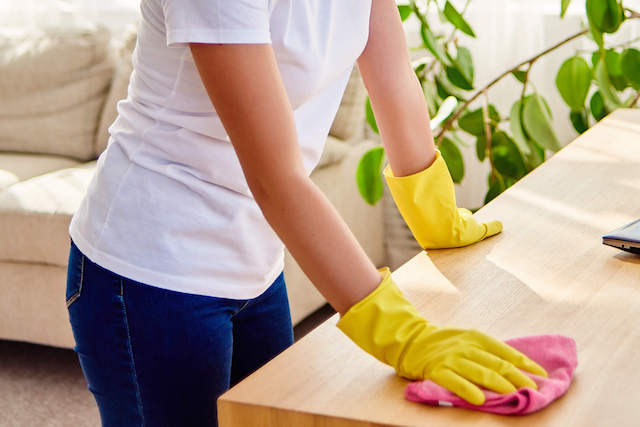
Steps for decontaminating non-porous surfaces include:
- Put on your safety gear.
- Vacuum the entire item using the HEPA vacuum.
- Spray the item with an EPA-approved cleaning product like Benefect Decon 30.
- Allow the cleaning product to sit for at least 10 seconds before wiping away with the microfiber towel.
- Repeat this process at least three times to remove lingering mycotoxins and bacteria.
- Allow the surface to dry completely before reintroducing it into the home.
Semi-porous items will use a similar strategy based on how porous the surface is. A great idea is to clean them and then seal the surface.
Another key detail to remember while working to remove mold from personal belongings is to throw out any microfiber towels used. These are filled with moldy particles, so it’s best to just get rid of them rather than attempt to clean them.
If you or a family member begin experiencing symptoms after reintroducing a cleansed item, you can attempt to decontaminate it again, but it’s best to just toss it out and invest in a new one.
If you’re facing an entire home filled with moldy particles, consider bringing in professionals like HomeCleanse to come in and decontaminate your personal belongings.
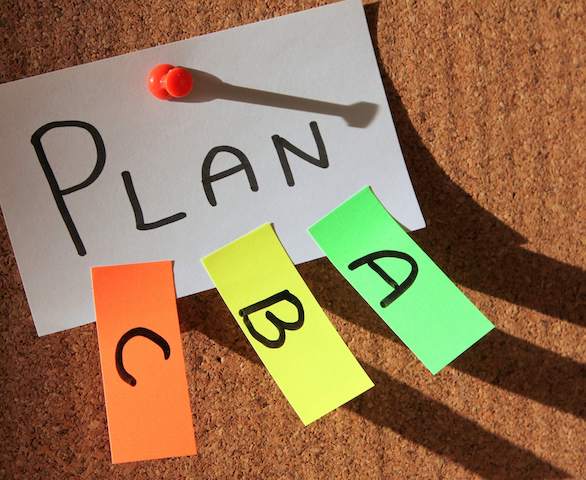
Creating a Healthy Indoor Environment
Society doesn’t often discuss this common indoor contaminant, which has led to widespread misinformation and incorrect handling of moldy problems. Until this is remedied, it’s up to us to build a foundation of moldy knowledge. The key to a home free from mold growth and affiliated contaminants is to build awareness and always have an action plan in place. That way, if a moldy situation pops up, you’ll be prepared to properly tackle the issue.
Learning how to remove mold from personal belongings and why this process is necessary is key to creating a safe indoor environment for you and your family. That way, you can rest assured that your home is completely decontaminated because no one should have to live with mold exposure.
Health begins at home. ™
Citations:
- Environmental Protection Agency. (n.d.). Mold. EPA. Retrieved from https://www.epa.gov/mold.
- Centers for Disease Control and Prevention. Basic facts about mold and dampness. Centers for Disease Control and Prevention. Retrieved from https://www.cdc.gov/mold/faqs.htm.
- World Health Organization. (n.d.). Mycotoxins. World Health Organization. Retrieved from https://www.who.int/news-room/fact-sheets/detail/mycotoxins.
- FOOD AND DRUG ADMINISTRATION. (2016, September 30). Food and Drug Administration Compliance Program guidance ... FOOD AND DRUG ADMINISTRATION. Retrieved from https://www.fda.gov/media/140749/download
- Lstiburek, J., Brennan, T., & Yost, N. (2002, January 15). Rr-0208: What you need to know about mold. Building Science Corporation. Retrieved from, https://www.buildingscience.com/documents/reports/rr-0208-what-you-need-to-know-about-mold/view.
- Environmental and Occupational Health Assessment Program, & Environmental and Occupational Health Assessment Program, & Health Science Section, Mold Basics for Primary Care Clinicians (2009). Hartford, CT; Connecticut Department of Public Health. , H. S. S., Mold Basics for Primary Care Clinicians 1–10 (2009). Hartford, CT; Connecticut Department of Public Health.
- Curtis, L., Lieberman, A., Stark, M., Rea, W., & Vetter, M. (2004). Adverse health effects of indoor molds. Journal of Nutritional & Environmental Medicine, 14(3), 261-274.
- Bush, R. K., Portnoy, J. M., Saxon, A., Terr, A. I., & Wood, R. A. (2006). The medical effects of mold exposure. Journal of Allergy and Clinical Immunology, 117(2), 326-333
- Fisk, W. J., Lei-Gomez, Q., & Mendell, M. J. (2007). Meta-analyses of the associations of respiratory health effects with dampness and mold in homes. Indoor air, 17(4), 284-296.
Still Have Questions?
A member of our team is here to help! Click on “Get Started ➤” below to book a consultation with a member of the HOMECLEANSE team. We have a few quick questions that will help us put together a roadmap to solve or prevent all of your mold problems.
Two minutes of your time could lead to better health for you and your family.
